More Wool in the Woods: The unlikely new alliance between sheep and forestry in Scotland
Long undervalued as an important agricultural output, wool is finding new purpose in the forestry sector as a nature based solution.
Managing Scotland’s land means having to navigate the complex landscape of competing land use priorities. Much of my work revolves around trying to balance these different interests and expectations in the face of shifting policy demands and increasingly urgent ecological objectives, meaning it is rarely straightforward. One of the most pressing and emotive examples of this is the relationship between sheep farming and forestry, both of which are deeply ingrained in Scotland’s culture, economy and environment.
Scotland’s rural landscape has long been shaped by the dynamic between these two land uses. The rise of large-scale sheep grazing during and after the Highland Clearances marked not only a major economic and cultural shift, but also fundamentally altered the ecology of our upland ecosystems. It contributed to widespread deforestation and soil degradation, as areas of forest gave way to open, treeless landscapes, a legacy still visible today, and one that many mistakenly view as natural.
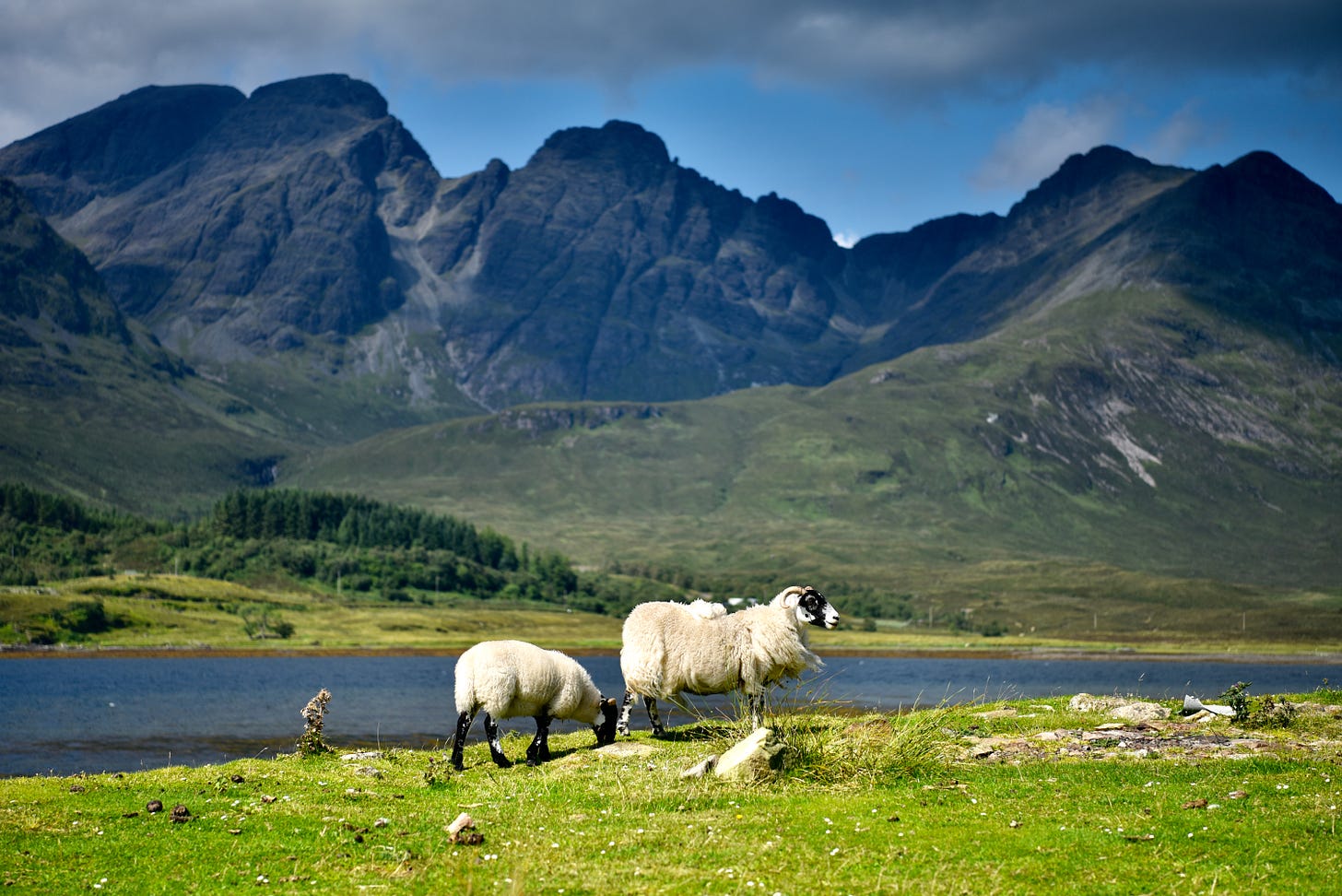
In recent decades, forestry has increasingly been promoted as a way to address this legacy of ecological decline. Expanding tree cover is seen not only as a means to restore woodland habitats, but also as a key strategy in tackling the twin crises of biodiversity loss and climate change. Political momentum behind tree planting has resulted in Scotland working to deliver ambitious targets for woodland creation, with forestry also being positioned as a green economic driver, supporting rural employment, sustainable timber production, and new forms of investment linked to carbon markets and ecosystem services.
In contrast, sheep farming, particularly in upland areas, is facing mounting challenges to its long-term viability. Rising input costs, labour shortages, and low returns are squeezing already tight margins, while increasing volumes of cheap imports from countries like New Zealand are undercutting domestic markets. Consumer demand is also shifting, with reduced meat consumption and greater scrutiny over environmental impact. These pressures are further compounded by impending changes to agricultural subsidies (on which many sheep farmers rely), and growing policy emphasis on using land to deliver greater public interest such as carbon sequestration. Described by some as the ‘perfect storm’, these trends point to a deeply uncertain future for many upland sheep farms.
As scrutiny around these land uses intensifies, so does the debate. Unhelpfully it is often framed in binary terms, pitting sheep and trees against each other, which only serves to further polarise views and strengthen the division. Yet, while the debate continues, an unlikely alliance is beginning to emerge between sheep and trees, and one which may help support a more integrated and sustainable future for Scotland’s upland communities.
The ‘Value’ of Wool
Wool played a central role in the Scottish economy for centuries. From our iconic tweeds to fine knitwear, Scottish wool was highly valued both locally and internationally, and its natural insulating and moisture-wicking properties made it an essential material, particularly in rural and working communities.
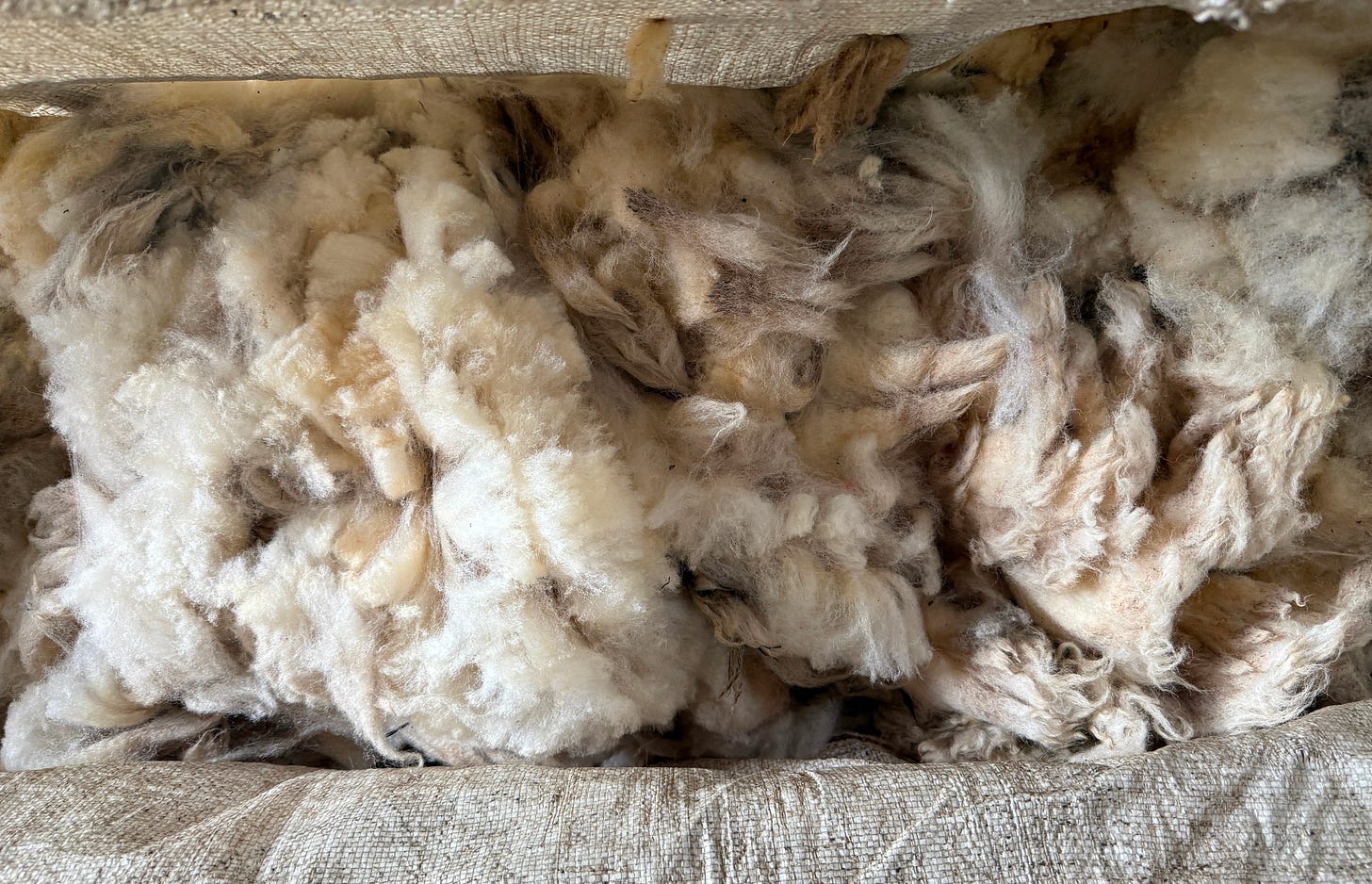
However, with the rise of synthetic fibres in the 20th century, demand for wool declined drastically, and today it is almost worthless. According to the British Wool Marketing Board, Scotland produces around 6 million fleeces annually, many of which go unsold due to low global prices, and are often burned, buried, or dumped.
Yet this same material, so undervalued in textiles, is starting to find new life and purpose in the forestry sector, as across Scotland an increasing number of foresters, landowners, researchers and environmentalists are turning to wool as a biodegradable, regenerative alternative to the plastics that have long dominated the landscape . From tree guards and mulch mats, to soil conditioners and erosion control, wool is tentatively becoming an effective tool in the effort to grow forests more sustainably.
Guarding the Trees
One of the most promising uses of wool is as a replacement for plastic tree guards. Traditionally, millions of plastic tubes are used across the UK each year to protect saplings from grazing animals, especially deer and rabbits. While effective in the short term, these plastic shelters present a long-term problem, as they are essentially made from fossil fuels, prone to dilapidation into microplastics, and are often not removed from site after they’ve served their purpose.
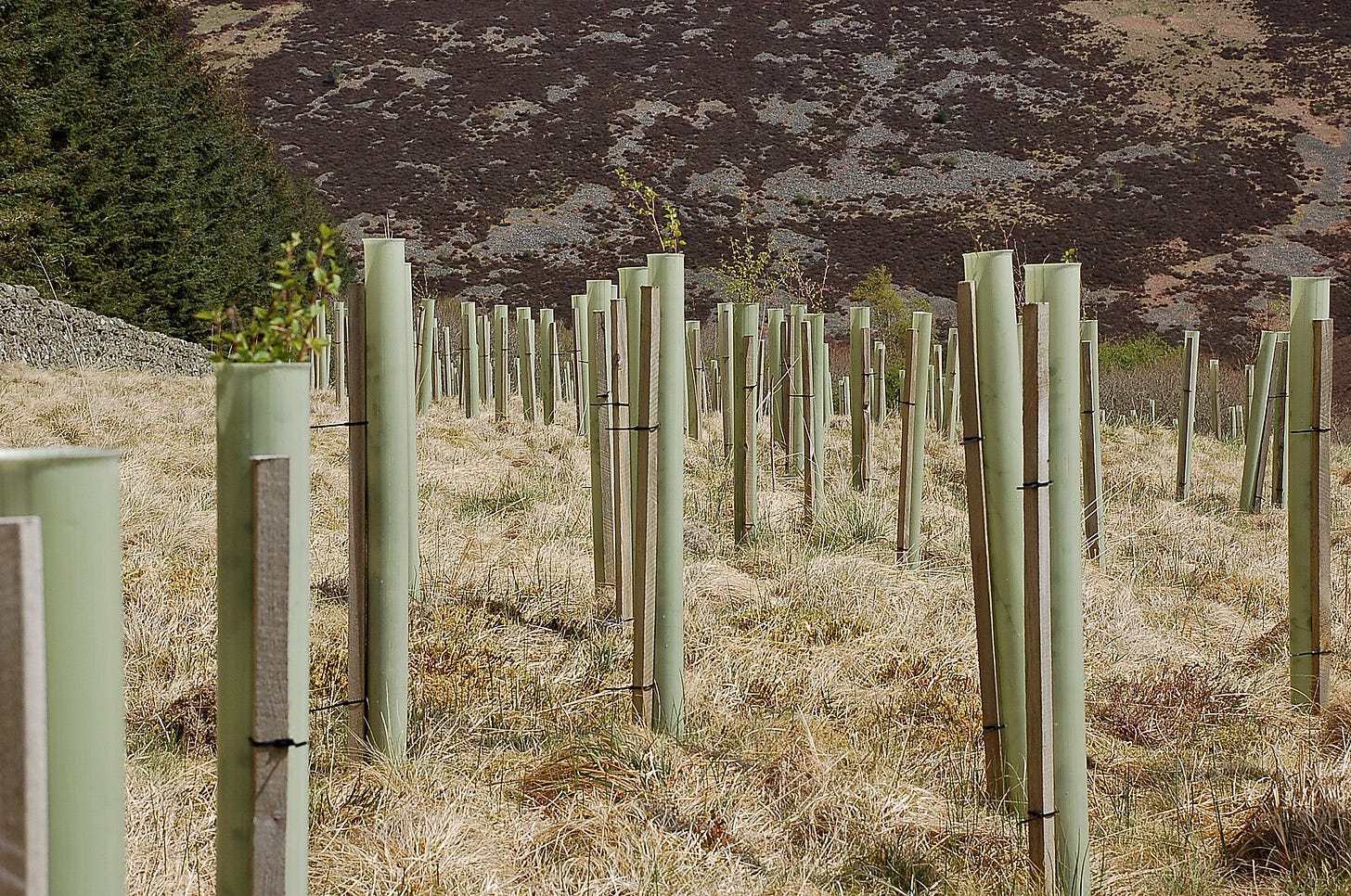
Enter wool. When felted into sleeves or wrapped in a mesh, wool can provide physical protection to young trees while also allowing light, air, and moisture to pass through. Unlike plastic, wool breaks down naturally, enriching the soil with nutrients as it decomposes, and eliminating the requirement for expensive removal.
NexGen Tree Shelters represented one of the most ambitious attempts to develop a tree guard from wool. Made from over 60% British wool and blended with bio-resins and plant-based polymers, it offered a compelling alternative to conventional polypropylene shelters. Crucially, it also provided a new market for low-value British fleece, aligning with circular economy goals and offering potential value back to sheep farmers.
Such was the strength of support behind this idea, that in July 2024 British Wool invested directly in the company, securing board representation and committing to supply wool for scaled-up production (about 156,000 m² monthly). Early trials drew strong interest from conservation charities, forestry bodies, and landowners looking for sustainable alternatives. However, despite the momentum, the business struggled to reach financial viability due to high production costs, complex scaling, and competition from cheaper plastics, resulting in them ceasing trading recently.
Despite this setback though, the concept remains solid. The product worked and the market demand is growing, so albeit further work is required to make it financially viable, it remains an exciting opportunity for the future.
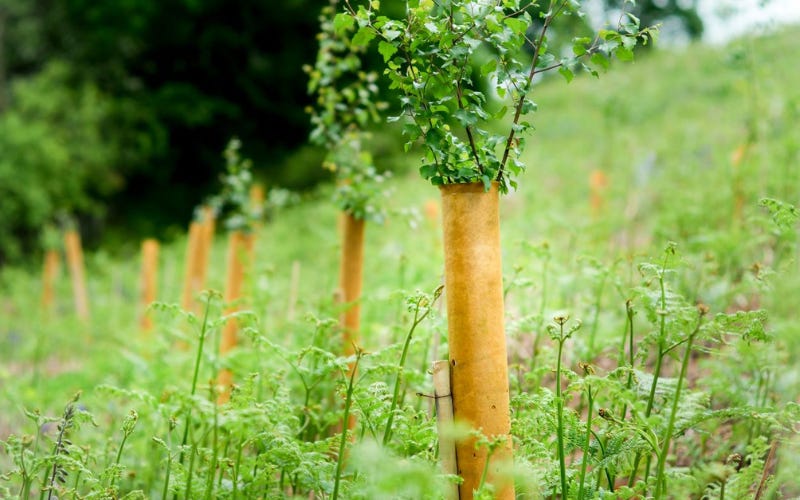
Magic Mulch
Wool’s benefits extend well beyond tree protection though. In Highland Perthshire, the use of wool as a natural mulch was trialled at Tombreck Farm, a community-based, permaculture-driven hill farm on the north shore of Loch Tay. Since 2019, the farm has used waste fleeces from its own flock of Blackface and Shetland sheep to suppress weeds and retain moisture around newly planted trees, shrubs, and forest garden areas. The fleeces, which are unwashed and minimally handled, are laid in thick rings around tree bases, providing a breathable, nutrient-rich barrier that slowly breaks down into the soil.
The results have shown that this approach reduces the need for chemical inputs and irrigation, especially during dry spells, and has been integrated into their broader agroecological land management model, demonstrating how traditional outputs like wool can be repurposed in regenerative woodland systems.
Another trial of wool mulching took place on a demonstration agroforestry site near Dunkeld, in collaboration with Scotland’s Rural College (SRUC) and the Loch Lomond & The Trossachs National Park. Around 100 native broadleaf saplings including oak, alder, hazel, and birch were planted along riparian margins and field edges. Each was mulched with a layer of coarse wool fleece to suppress grass competition and retain soil moisture, and then protected with netted cages, allowing rotational grazing by sheep between rows. The wool mulch was found to reduce the need for manual weeding and improve early tree establishment, while its slow decomposition fed organic matter and nitrogen into the soil, creating a healthier micro-environment for young trees.
In recent years, Cheviot Trees in Northumberland has emerged as a leading innovator in the development and commercialisation of wool-based mulch mats in the UK. Made from 100% British Wool, BioWool™ mats are water-permeable, and help suppress weeds, retain moisture, and regulate soil temperature around young trees, with the wool’s natural lanolin also acting as a pest deterrent. Predominantly used for hedgerow planting and small scale tree planting at present, they have the potential to be adopted for larger projects.
From Seed to Soil
In tree nurseries, both large and small, wool is starting to show promise as a natural alternative to synthetic growing media. Wool’s properties are well suited to young tree production, for all the same reasons it is a good mulch, and that makes it ideal in peat-free composts, which are increasingly in demand as the industry shifts away from peat extraction.
One of the best examples of this is Dalefoot Composts in Cumbria, which has developed a peat-free tree and shrub mix made from wool and bracken. The wool provides slow-release nutrients and excellent moisture retention, while the bracken adds structure and trace minerals. Together, they create a growing medium that supports strong root development and reduces the need for irrigation and synthetic inputs, which is particularly useful in exposed or low-input nursery systems. These composts are now widely used by small scale native plant nurseries and conservation growers aiming to reduce their reliance on plastic and chemical fertilisers.
In some agroecological nurseries, raw fleece or felted wool is sometimes laid as a mulch across pot tops or plug trays to prevent weed growth and slow evaporation. This has proven to be especially useful in open-air systems or in polytunnels where pots dry out quickly. In some cases, wool is even being trialled as a layer in the bottom of plug trays or propagation beds, acting as a moisture-retentive buffer that feeds seedlings as it breaks down.
Commodity > Cost
While wool-based products such as tree shelters are not yet commercially available or financially viable at scale, they represent a valuable area of innovation. The environmental benefits, from reducing plastic use to improving soil health, closely align with the forestry sector’s increasing focus on nature-based solutions, meaning wool holds real promise for the future of sustainable forestry in Scotland.
There are undoubtedly challenges to its wider adoption, like transport, labour requirements, and lack of off the shelf products, but interest is building, especially in smaller-scale agroforestry, rewilding, and regenerative land use projects. In these settings, wool is already recognised as a local and natural alternative to plastic. With greater investment in product development, processing, and supply chains, these early applications could develop into serious market disrupters.
Research is also helping build the foundations for future use. Institutions like Scotland’s Rural College (SRUC) and the University of the Highlands and Islands are investigating the scientific potential of wool in land management. Field trials are examining how wool decomposes under different climatic conditions, how it interacts with soil microbial communities, and how it might be blended with other natural fibres to enhance its structure and performance. It is hoped these studies could lead to the development of new, commercially viable wool-based products that support tree growth, erosion control, and seed germination.
At a policy level, the Scottish Government’s commitment to net-zero emissions and its support for nature-based solutions has created ‘fertile ground’ (pun very much intended) for this kind of experimentation. As subsidies shift away from carbon-intensive practices and towards ecosystem services, the integration of wool into forestry could be part of a wider transition toward circular, sustainable land use.
Using wool in forestry is a powerful example of the circular economy in action, transforming waste fleece into biodegradable materials that protect trees, enrich soil, and eliminate plastic. It also offers opportunities for economic and social regeneration, with wool rightly restoring its status as a commodity rather than a cost.
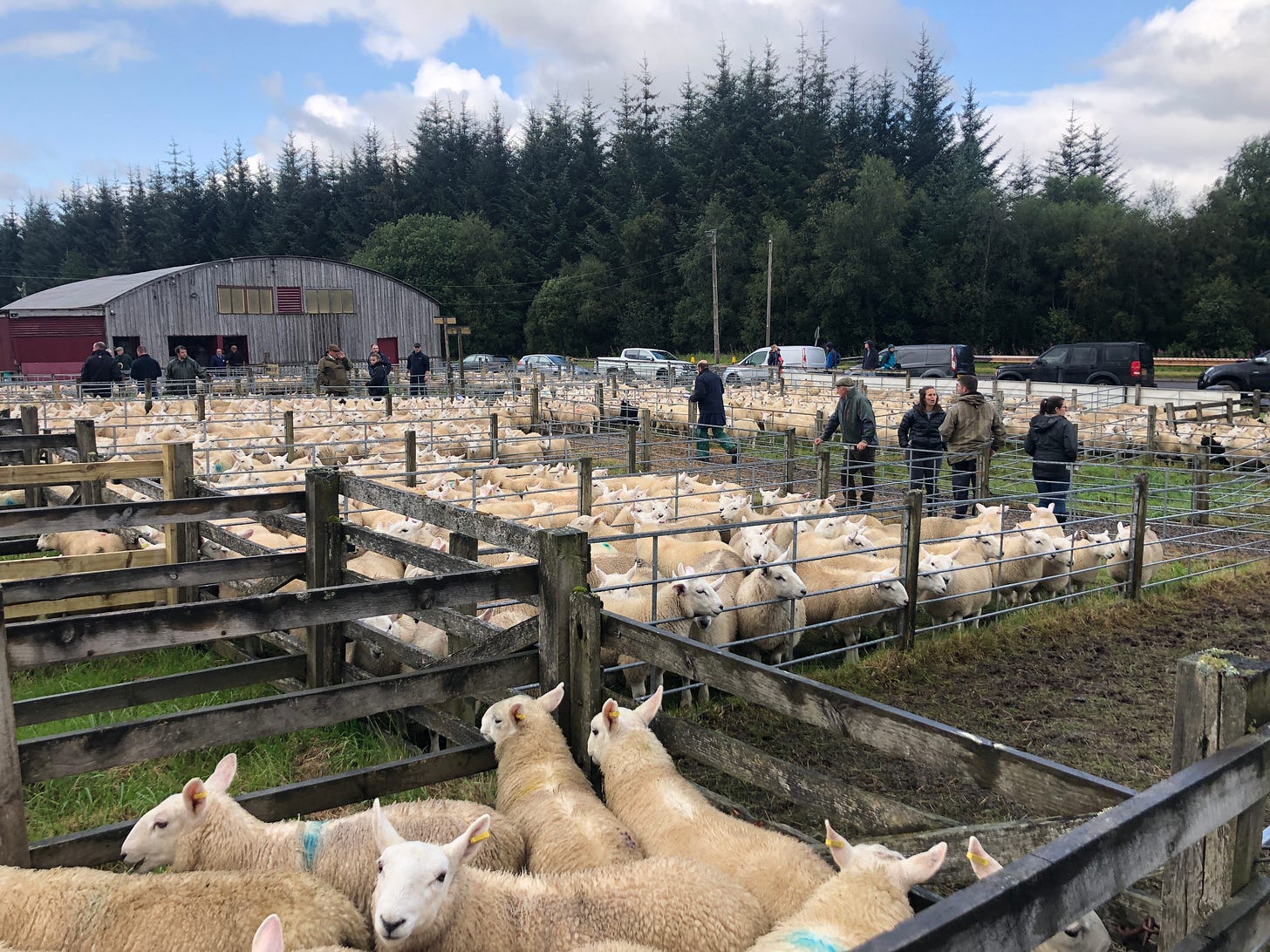
More Wool in the Woods
Scotland’s sheep and forests have shared a long and complex history, often marred by conflict, but the emerging role of wool in forestry suggests a new chapter, and one where these traditionally opposing land uses can work together for mutual benefit. As the demand for sustainable and low-impact options for woodland creation becomes more pressing, wool offers a practical solution that is embedded in Scotland’s agricultural traditions and holds promise for its ecological future.
While many of these wool-based innovations are still in their infancy, they offer real potential for development. With the right investment and support, wool could become a familiar and valued presence in Scotland’s forests, a tangible demonstration of circular economy principles, and a step towards more resilient and sustainable land use.
In a time of ecological crisis and change, perhaps it is the unlikeliest partnerships that hold the greatest promise. The future of forestry in Scotland may well be woven with wool.







A really interesting read, Charlotte, thank you.
As an artist who has long used supported the use of wool, through reuse as much as by using the fleeces of natural herds (particularly those which are slaughter-free), I find these new uses, of what has sadly become a waste product, in agriculture fascinating. I also think that human-kind has meddled enough, always searching for cheap and easy ways to make more money at the ultimate cost of the ecosystem and environment - it’s good to see even a small move away from plastic products.
I’ve used fleece mats in my own garden as a way of suppressing weeds, so I can see gardeners adding an extra market for these innovative new businesses. These had been used as insulation for frozen pet food and I couldn’t throw them away without finding another use for them. I still have one length in the greenhouse, waiting to be used.
On that thought, I wondered if contacting Monty Don, Beechgrove and the like might be a way to bring this to a wider audience? If gardeners, a huge market in the UK, supported this revolution then the burden on getting farmers to embrace it might be shared.
This is so inspiring, let's hope that all these wool based solutions can be scaled up to save plastics and peat in forestry and horticulture.